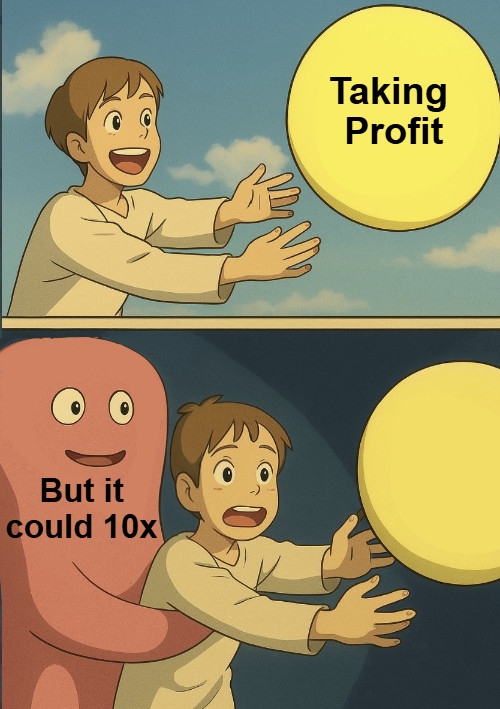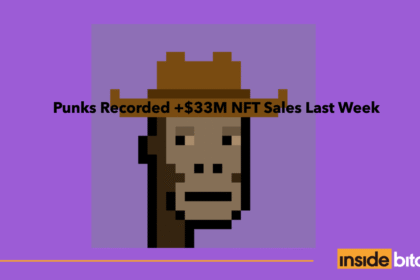Soo, we’re trying something different for the rest of this week.
If you’re a mega pro crypto trader… you might already know most of what we’re covering. But hey, a refresher never hurts, amirite?
That said, today’s edition is mainly for those of you who open a trading app and immediately feel like you’re in a maze. Blindfolded.
We’re breaking down the main types of crypto trading – in plain English, with zero finance degree required – so you can figure out what kind of trading style actually makes sense for you.
Ready? Let’s go 👇
|
1/ Spot trading
This is the most basic way to trade crypto. You buy coins at the current market price – on the spot, get it – and you actually own them.
Spot trading can be:
👉 Short-term, when you buy and sell within hours/days, or
👉 Long-term, when you buy and hold your coins, hoping they increase one day.
Spot trading is quite easy to understand and is lower risk, so it’s good for beginners, as well as long-term investors.
You can do it on platforms like Binance, Kraken, Bybit, ChangeNOW, or Coinbase – just a few of the many exchanges that offer it.
⚠️ Downside: you only make money if prices go up.
|
2/ Margin trading
This is spot trading on steroids – when you use leverage (aka borrow money) to trade more than you actually have.
Say you have $100, and you use 10x leverage → now you can trade like you have $1,000, so there’s potential for bigger gains.
Which sounds cool… but at the same time, if the coin drops 10%, your position loses $100 – your entire initial investment.
At that point, your platform will either liquidate your position (aka force-close the trade to stop further losses) or hit you with a margin call (aka ask you to deposit more funds or else).
So, it’s better for risk-tolerant traders, because even though it can bring bigger gains if you’re right, there’s a…
⚠️ Downside: way more risk, and it can be brutal if you’re wrong.
Margin trading is available on platforms like Binance, Kraken, Bybit, MEXC, and Kucoin, to name a few.
|
3/ Futures trading
In futures trading, you’re not buying the actual coin (like in spot trading).
Instead, you’re trading contracts that let you bet on whether the price will go up or down in the future.
👉 Think the price will go up? → You go long.
👉 Think it’ll go down? → You go short.
That’s the beauty of futures – you have the chance to make money even when the market is crashing.
And just like margin trading, futures let you use leverage, so → bigger potential profits and bigger risks.
All considered, this strategy is good for those who wanna profit in both bull and bear markets.
You can trade futures on platforms like Binance, Bybit, MEXC, KuCoin, and BYDFi, which all offer various levels of leverage and contract types.
⚠️ Downside: high risk, especially with leverage. Better not to play with this unless you really understand what you’re doing.
4/ Copy trading
The crypto version of copying the nerd’s homework.
You pick a trader or bot to follow, and your account copies their trades in real time.
It’s available on platforms like Bybit, MEXC, BYDFi, HTX, and OKX, all of which let you choose from a range of traders based on their stats, strategies, and past performance.
No need to have experience or monitor the charts – so it’s great for beginners and passive investors.
But…
⚠️ Downside: you’re 100% depending on someone else’s strategy – if they tank, you tank too. Plus, past wins don’t guarantee future success.
|
5/ Social trading
Similar to copy trading, but with more brain activity. Kinda like doing homework with the nerd.
You don’t automatically follow trades. Instead, you watch what other traders are doing, read their reasoning, and choose whether to copy or not.
It’s interactive. There are forums, comment sections, trade ideas.
For that, it’s good for curious learners, semi-active traders, or anyone who wants to understand why a trade is being made.
You’ll find social trading features on platforms like BYDFi, HTX, OKX, Bitunix, and Bitget.
⚠️ Downside: you’ll still need to put in time, think critically, and deal with FOMO responsibly.
|
6/ Arbitrage trading
Some exchanges have slightly different prices for the same asset.
Arbitrage is when you buy low on one exchange, sell high on another, and profit from the difference, without needing the market to go up or down.
And same goes for price mismatches between trading pairs on the same exchange
Arbitrage is often done using bots, because the price gaps are usually tiny and only last seconds or minutes. That’s why speed, low fees, and capital matter a lot.
⚠️ Downside: profits are usually small unless you move large volumes, and opportunities disappear fast. Plus, fees and slow blockchain transfers can easily wipe out your gains.
|
7/ Algorithmic trading
That’s when you set up automated strategies or use pre-built ones to let a bot trade for you 24/7.
These bots follow a set of rules – stuff like “Buy Bitcoin if it drops 5% in 10 minutes.”
One of the biggest perks is speed, as bots react way faster than humans ever could. Plus, they won’t panic-sell at the first red candle.
⚠️ Downside: if the bot’s dumb, you’re done.
You can try algo trading on platforms like Binance, Bybit, MEXC, KuCoin, and BYDFi, which offer built-in bots or let you connect your own through API.
So, here are the basics of how people trade crypto 💃🕺
I’ll see you tomorrow with a new beginner-friendly breakdown. Stay safe out there! ✨
|
Now you’re in the know. But think about your friends – they probably have no idea. I wonder who could fix that… 😃🫵 Spread the word and be the hero you know you are! |















